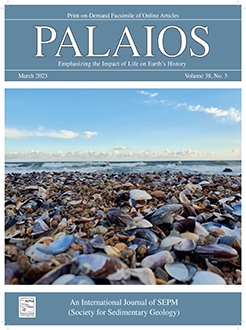Studies dealing with the colonization window typically emphasize two major features: duration (short term vs. long term) and frequency of colonization (episodic vs. continuous). However, our understanding of tide-influenced meander loops requires consideration of an additional feature, the architecture of the colonization window, which comprises not only the spatial dimension and geometry of the colonization surface, but also its evolution through time. Tide-influenced meander-loop systems show a heterogeneous trace-fossil distribution that reflects the variety of processes operating along the point-bar and overbank colonization surfaces. Ichnofabric analysis of tide-influenced meander-loop deposits from the Upper Cretaceous Tremp Formation (Pyrenees, Spain) provides valuable insights into the sedimentary and ichnological dynamics of these marginal-marine systems and allows the importance of stratal geometry controlling the colonization window to be evaluated. Six ichnofabrics are identified in point bars and associated overbank deposits. These ichnofabrics differ in bioturbation index (e.g., higher in the upper part than the lower-middle parts of point bars), preservation of primary sedimentary fabric (typically preserved in the lower-middle parts of point bars), inferred behavior and trophic types (e.g., dominance of dwelling or feeding structures in the lower-middle and upper parts of point bars, respectively), and other features such as depth of penetration, ichnotaxonomic composition, presence or absence of root trace fossils and/or mottling, or number of superimposed suites. The key environmental factor controlling the nature and distribution of ichnofabrics is the morphology of the point-bar lateral-accretion surfaces and their evolution through time. The architecture of the colonization window is here linked to the helicoidal flow and discharge changes in meandering channels, and the successive development of lateral accretion units with time.
How to translate text using browser tools
3 May 2023
UNLOCKING THE ARCHITECTURE OF THE COLONIZATION WINDOW: ICHNOFABRICS FROM UPPER CRETACEOUS TIDE-INFLUENCED MEANDER-LOOP DEPOSITS
Davinia Díez-Canseco,
Luis A. Buatois,
M. Gabriela Mángano,
Jaime Cuevas-González,
M. Isabel Benito
ACCESS THE FULL ARTICLE
It is not available for individual sale.
This article is only available to subscribers.
It is not available for individual sale.
It is not available for individual sale.

PALAIOS
Vol. 38 • No. 4
April 2023
Vol. 38 • No. 4
April 2023




